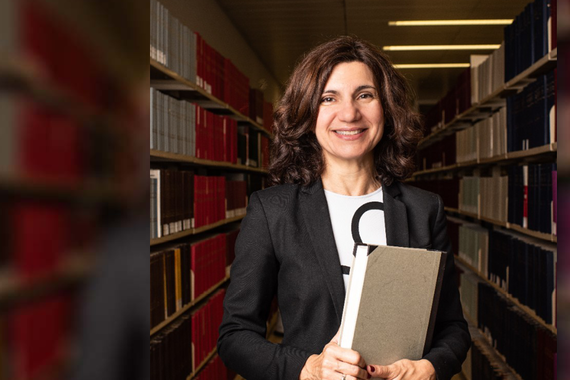A New Faculty Member to Charge Things Up
“If I want to do cutting-edge technology, the challenge is still in fundamental science,” says Assistant Professor Jie Ding. Although he is the newest faculty member in the School of Statistics, Ding brings a unique educational background to the school: electrical engineering. Despite his passion for engineering, Ding recognizes the importance of understanding structural science, which is where the crossover between electrical engineering and statistics lies. His unique passion for the two fields is what ultimately led him to the University of Minnesota.
Education Exploration
Ding graduated from Tsinghua University in China. He entered college set on studying math and spent two years doing so before realizing he was very intrigued by the world of engineering. “At the time, smartphones were becoming very popular,” Ding explains. His curiosity about the science of electronic systems led Ding to take another two-year venture on digital and analog systems.
After graduating from Tsinghua University, Ding decided to pursue a PhD at Harvard University where his research career took off. He was originally drawn to Harvard because of the atmosphere there, well known for conducting innovative research that applies theoretical math concepts to the world of engineering.
Time Series Data Research
At Harvard, Ding was introduced to the idea of time series data and has since used it as the motivation for a number of research projects. Time series data, a sequence of data taken relative to time, has numerous real-world applications—many of them rooted in statistics.
“My research and research interests and what I’m doing are always evolving with time,” Ding explains. At the moment, his primary focus is to bridge the gap between classical time series models and recent heuristic methods, and to create statistical models that employ both interpretability and generalizability. In the past, he has dealt with real-world data such as environmental measurements, asset prices, and multimedia data.
One of his most recent applications of time series data was the ozone prediction in Boston. Through the use of a concept called real-event prediction, Ding and a colleague in the field of environmental science worked together to create a statistical model for predicting when ozone levels will be super high. Ding was intrigued by this subject because, as he explains, “Ozone is very harmful to the human body, but we don’t have a sophisticated physical model to predict when ozone levels will be high.” Through his research, Ding was able to develop a model that will help scientists anticipate ozone levels in the future based on real-world weather or human events. “The results so far,” as Ding says, “are very promising.”
Some of his current research is centered around statistical tools for complex streaming data, like audio or video. Both of these avenues have large amounts of streaming data and require a lot of storage and communication bandwidth. The goal of this research is to develop efficient strategies for representing and inferring from streaming data. This is how Ding ended up here at the University of Minnesota in the school of statistics. “It was mutual selection,” Ding explained. “People here are very interested in my topic, and I really like the people here because they are friendly and knowledgeable."
Looking Toward the Future
Ding may be one of the younger members of the faculty, but he has big plans for the future. He is elated about the master’s level course he is teaching, Applied Regression Analysis, because most of his students are studying subjects outside of statistics, which provides a fascinating diversity of experiences. “Many of [my students] actually share the view with me that there is some fundamental methodology that they want to learn and apply to their own discipline,” explains Ding.
As far as his research is concerned, he plans to continue down his current path, but “focus more on bridging classical mathematical methods with newer ones from other disciplines, like computer science.” Whether the engineering world or the statistics field, Ding does not like to confine himself to one particular field of study. The most important thing for him is “do whatever is intellectually interesting and potentially beneficial to the whole society.”
This story was written by an undergraduate student in CLA.



